- Apply
- Visit
- Request Info
- Give
Artists of ‘Precision’ speak on ‘Intersection of Art and Science’
Written by Dwight Bachman
Published on April 20, 2021
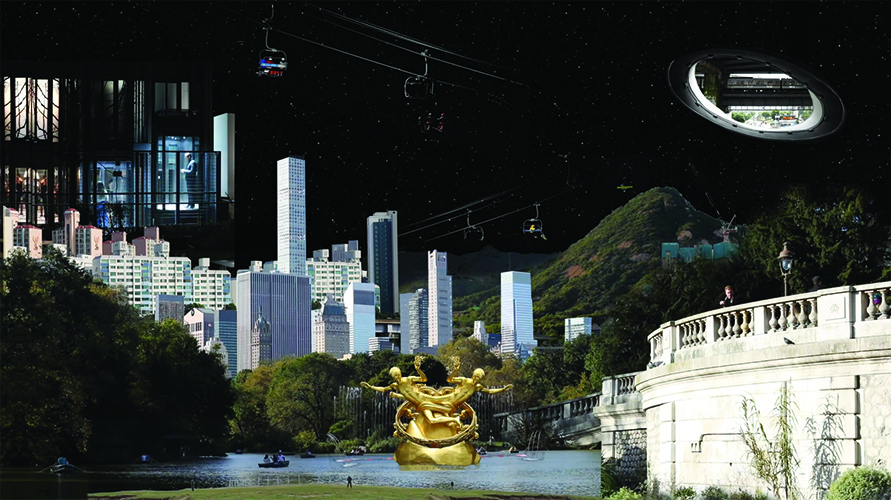
The lyrics to “The Art of the Possible” from the musical “Evita” read: “One has no rules, is not precise, one rarely acts the same way twice. One spurns no device practicing the art of the possible.” Those lyrics aptly describe the exhibition “Precision: Illustrative Technique in Art and Science” being showcased at Eastern Connecticut State University’s Art Gallery from March 15 to April 25.
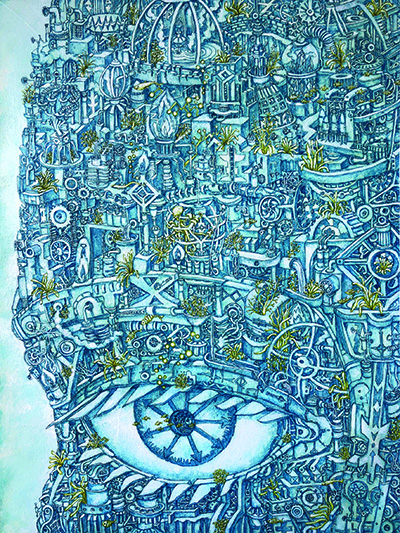
No device — abstraction, pencil, brush, photography, architecture, graphs, charts, diagrams, collages, maps, animals, daily life, nature, animations, visions of the future and more — was spared by the 27 artists in the exhibit. Their works are designed precisely to unravel scientific facts through compelling visual language. On April 7, the artists shared their thoughts in a virtual forum.
“This exhibition seduces us intellectually and emotionally,” said Art Gallery Director Yulia Tikhonova. “The artists carefully studied scientific facts, data and natural phenomena. Their unexpected juxtapositions stun the viewer with unexpected meanings. The artists start from the same rigorous facts, but quickly detour into the world of emotional engagement and metaphor — and what bright and splendid visions result!”
Mark Lefkowitz, a certified biological medical illustrator and creator of the digital painting “Fertilization,” said to achieve essential precision, much forethought and technical planning goes into the creation of each illustration or animation project.
“I strive to bring to the task a unique combination of skills, including technical knowledge, strong conceptual thinking and distinctive design capabilities. My goal is to produce images and animation that educate audiences and enhance marketing strategy.”
Aga Ousseinov, whose mixed media work “Are There Rays of Cold?” is presented on wooden panel, said, “Artists create out of whatever you have around you. We make the invisible become visible. Underneath all the chaos that has formed both in the modern world there is a certain precision that lies beneath it. My work in mixed media attempts to find a balance between precision, that is almost scientific, and willful chaos that is commonly found in creativity.”
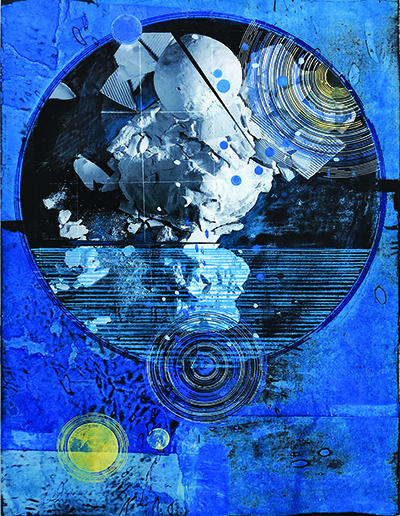
Susan Gamble and Michael Wenyon have been working together since 1983, combining fine art, history of science, physics and optics. They created holograms titled “Floored in the Covid Era, 2020,” in a bathroom in Queens. “We used pills, pill bottles and disinfection items that were much on our mind at the time,” said Gamble. “Looking at the image is in itself precise. The details are sharp, as is any dust on the floor or grout between the tiles; all in 3-D,” said Wenyon.
“It seems we all rely on keen observation and then visually interpret what we see,” said Carol Scwartz, professor of illustration at Eastern, writer of children’s books and creator of “Gifts from the Sea Table.” “It is surprising how much people don’t see when they are looking. It would be difficult for science and art to exist without the other. We need each other! The artists that take on the challenge of creating work that depends on accuracy and precision create a kind of magic where the mind and the heart meet.”
Robert Wood has done it all — illustrating the stars, a book by Carl Sagan and what a nuclear explosion would look like on earth. He has illustrated other works for National Geographic, Neil deGrasse Tyson, the National Park Service and Steven King. “My advice to illustrators is when a job comes in, try to observe it in a unique way. If you do it differently, you will be ahead of others. Capture things others don’t notice and make something out of them.”
Hyemi Kim’s piece “City Collage” is a short-looped video collage series. “I juxtaposed various city scenes to make utopic landscapes. When I combine videos to create a united landscape, it requires a precise connection of all moving elements. The precision of connecting moving images is the key to my magical utopia.”
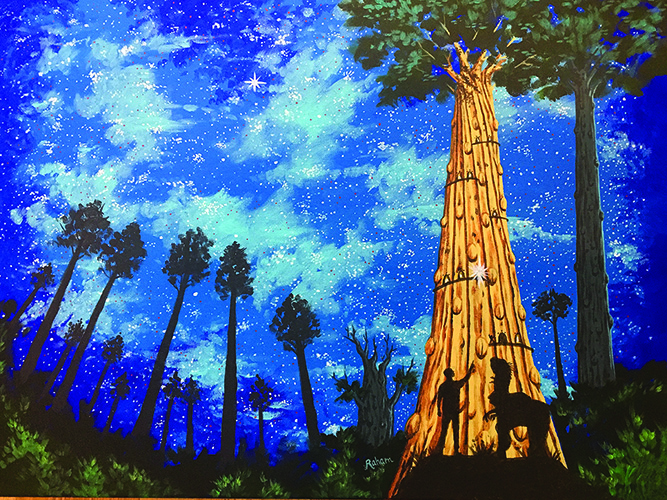
Video artist and stone sculptor Virginia Lee Montgomery uses precision to explore the philosophical relationship between physical and psychic structures in her work. “Like a witch, my work is marked by its intentionality, intellectualism and care, all of which are qualities I honed via a practice of studio magic and willed precision.”
Biology illustrator Patricia Cassady’s work “Snowy Owl” is also featured in the exhibit. She said she likes to get her students outdoors to study: “Outdoors is where they can be still and observe precisely. Using the correct materials is also critical in precision.”
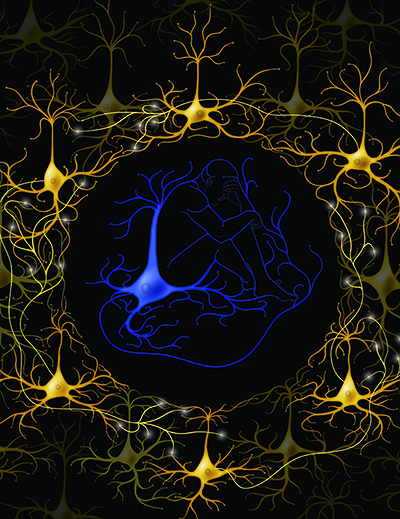
For author and scientific illustrator Gary Raham (“Mother Tree Forest”), “The challenge in precision is to create an ‘Oh, my!’ moment for the viewer, but also an ‘Oh, I see!’ moment of clarity and realization. I want to come up with a new and satisfying way to have the observer say, ‘Oh, my. Now I see what is happening clearly. And it’s beautiful!’”
Margot Glass, whose work “Grasses” is on display in “Precision,” says slowing down is key to precision. “I find that my breathing and movement quiet down to adjust to this effort in a way that allows me to focus and tune out the outside world. Detail and precision in my drawings invites the viewer to step close to share in the experience of seeing the subject at hand.”
Anna Lindemann, assistant professor of digital media and design at the University of Connecticut, said, “In my work, I simultaneously embrace and resist precision. We won’t understand things unless we make them visible. I am interested in using biological processes as a departure point for reflecting on human experience and emotion, and it is this desire that takes me to imprecise territory where I embrace ambiguity and speculative fiction.”
Tikhonova said that whether they are creating material for elementary school children or for surgeons ready to operate, artists must get the correct message across. “Science is a beautiful art. These are discoveries that often only exist in the formulas of researchers until artists perform their magical visualizations.”
The Art Gallery is open Monday-Friday from 9 a.m.-6 p.m. and weekends by appointment. All events are free and open to the public. For more information, email: tikhonovay@easternct.edu or visit www.easternct.edu/artgallery/.

